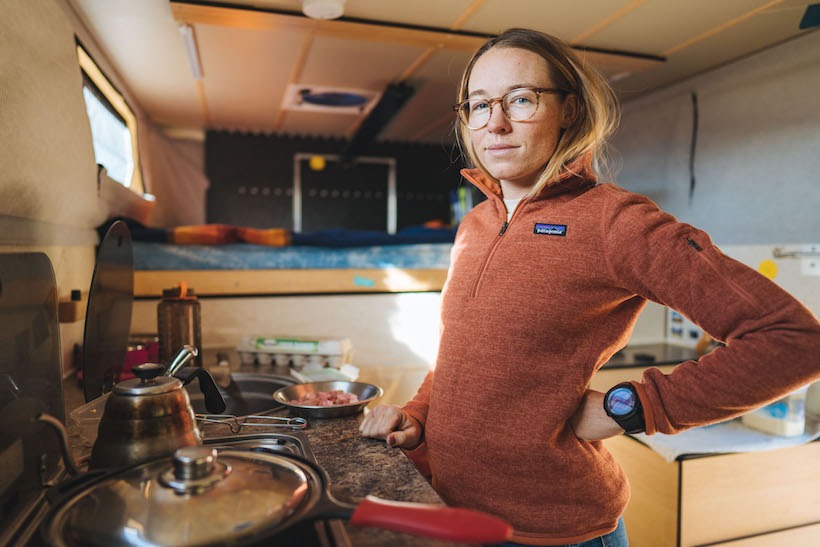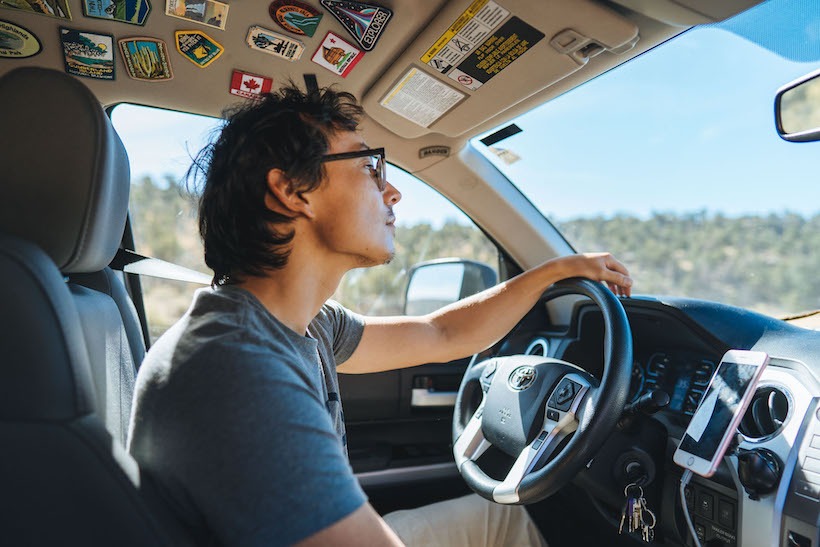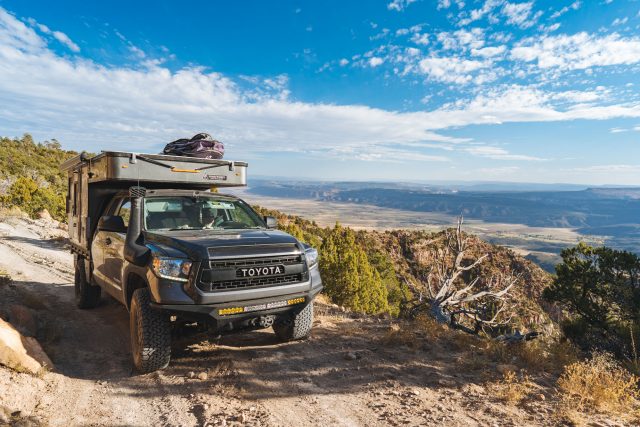The Rimrocker Trail is a newly minted 160-mile dirt 4×4 trail that leaves from Montrose, Colorado and goes to Moab, Utah. The trail is named after the miners called “Rimrockers”, who used to work the many mines in Montrose County. The trail was designed to bring tourism to this otherwise seldom visited part of Colorado and was officially opened to the public in 2016.
Montrose – Nucla
The Rimrocker Trail officially starts in the town of Montrose, Colorado. We arrived in the late afternoon and not wanting to miss anything we went a quick 20 overland miles before pulling into the Iron Spring Campground for the night.
The next morning we woke up and headed out early to make the most of our day. With the Uncompahgre Plateau nearby we decided that could be a good place to stop and make breakfast with a view. The off-road drive was beautiful through the remaining fall colors and we passed many operational logging roads and slack jaw cows as we made our way to the plateau.
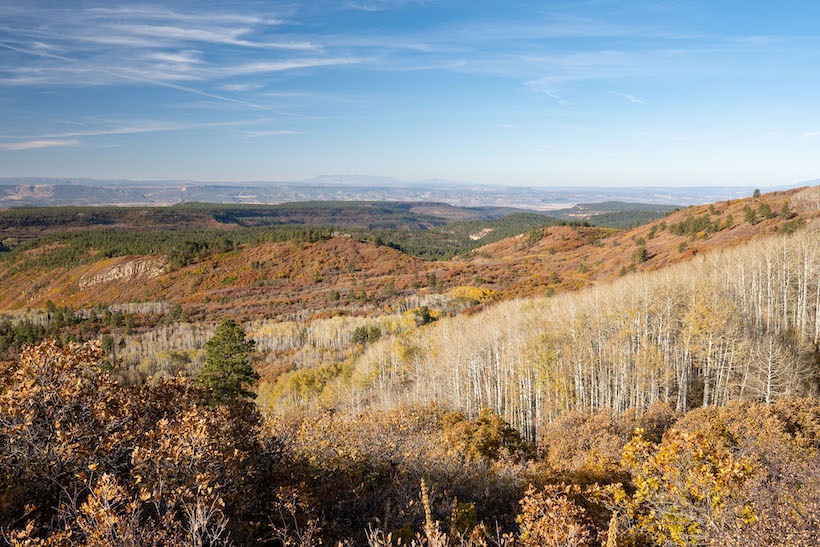
After, we descended into the sleepy, little town of Nucla. We stopped to take a look around before heading to the equally small town of Naturita, which was just a quick detour away from the official trail. Either town has a few small places to eat if you are in search of a pitstop.
Please Note: There is no cell service in either town and it’s also the last chance for gas until Utah if you plan on following the Rimrocker past HWY 141. It’s also wise to have your maps saved offline before venturing past this point!
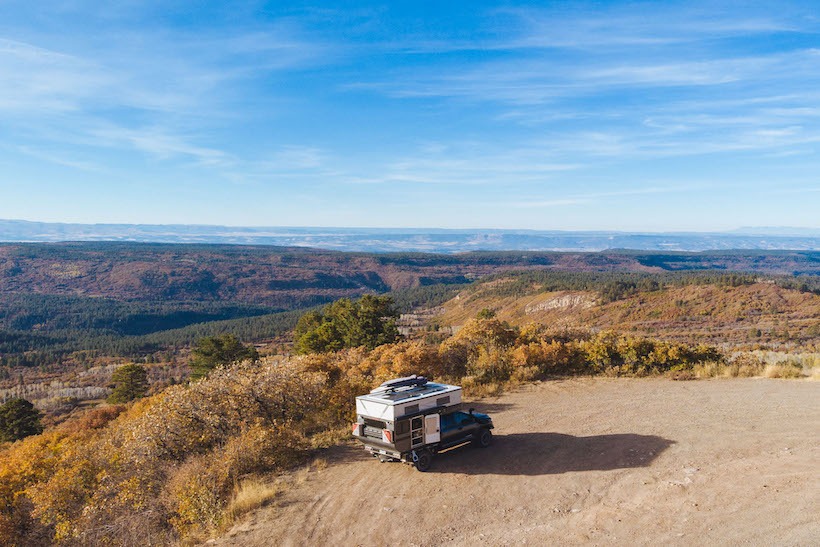
Nucla – HWY 141
Just after Nucla, we went through some of the most technical, but still pretty mild, sections of trail yet. We eventually came to the rim of the San Miguel River Valley and the official start of the Uravan Mineral belt which is home to over 200 mines. This area is rich in carnotite ore, which contains radium, vanadium, and uranium. The rest of our drive to camp was dotted with mines named Joe, Sandy, Fox, Dolores, Club Sandwich, Last Chance, Big Dick, and Little Dick to name a few.
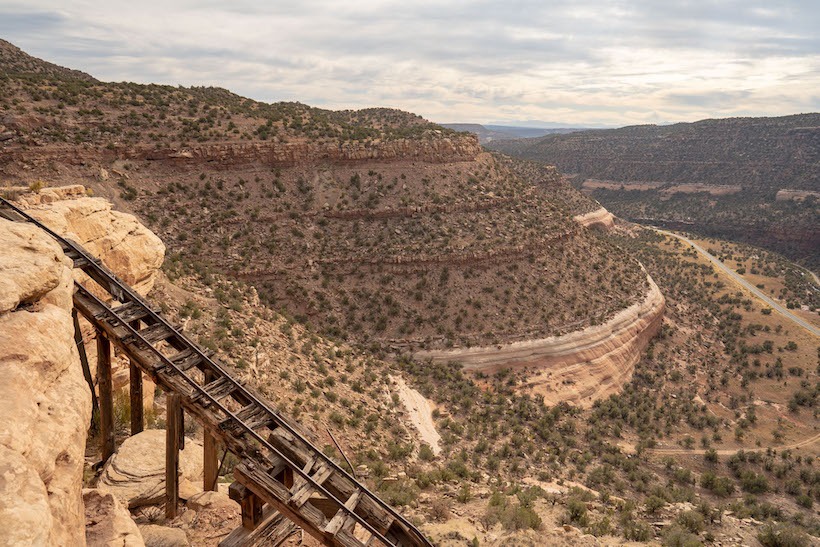
We spotted a little road that branched off the Rimrocker Trail and decided to see if we could find a camp spot for the night. Sure enough, we found a beautiful spot on the edge of the cliff line overlooking the San Miguel River and the surrounding valley. We also could see four mines that were in direct proximity to our home for the night.
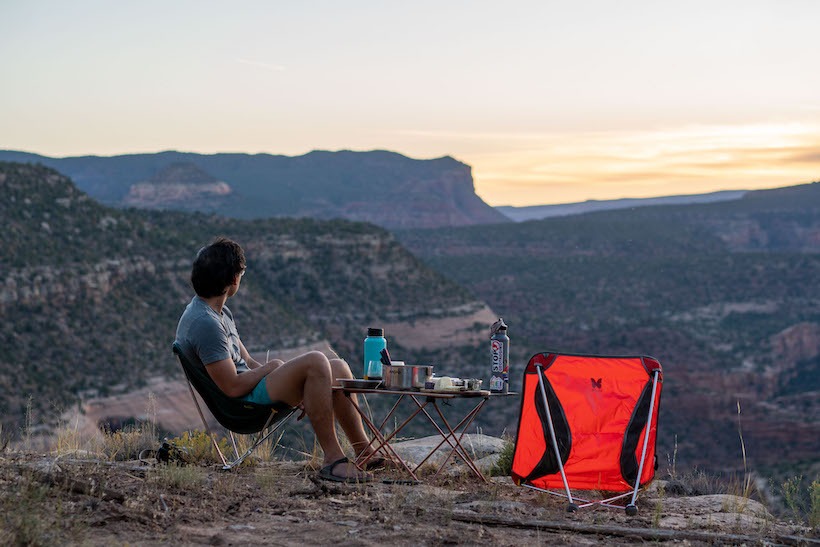
The next morning, we went on foot to explore the nearby mines. Just a quarter of a mile from our camp was where an old miner dwelling perched on the same ridge. We found the old refrigerator, oven, countless tin can meals, and even pieces of old dinner plates among the wreckage. This area is so dry that we even came across a pile of eggshells that have been out there since the days of the mine operation. We spotted some rails disappearing over the cliff and decided to check them out. The rails went all the way down into the mine… Ask me how I know!
After finding signs warning that the mines are still radioactive, we quickly made our way back to camp where we packed up and continued down the Rimrocker Trail towards Highway 141.
HWY 141
When the Rimrocker Trail intersects the pavement of Highway 141 there’s a ton of detour potential that all lie just a few miles off the Rimrocker.
The first stop was to the roadside coke oven. Constructed in the late 1800s the oven was used to convert green coal into coke coal, which burns much hotter and produces virtually no smoke.
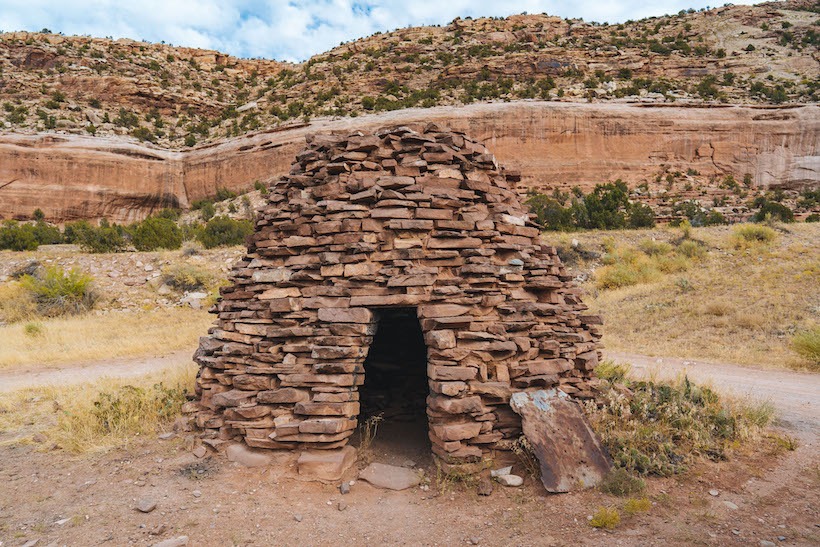
Continuing south on Highway 141, the hills are spotted with more mines on the eastern side of the valley. We stopped at an overlook to see the remains of the Dolores River Hanging Flume. The flume was completed in 1891 and was an architectural achievement that was celebrated around the world. The flume carried water from the Dolores River, upstream more than five miles to the Lone Tree Placer Gold Mine. Sadly, the mine was less successful than the flume and was shut down shortly thereafter. The wood used to construct the flume was sourced from Pine Flat and Carpenter Ridge near Buckeye Reservoir, which we’d drive through later that day.
Just another mile down the highway we pulled down an unmarked dirt road where we parked and walked to an overlook of the confluence of the Dolores and San Miguel Rivers. Being that the two rivers are different colors, it was interesting to see the two converge and swirl together as they travel downstream as one.
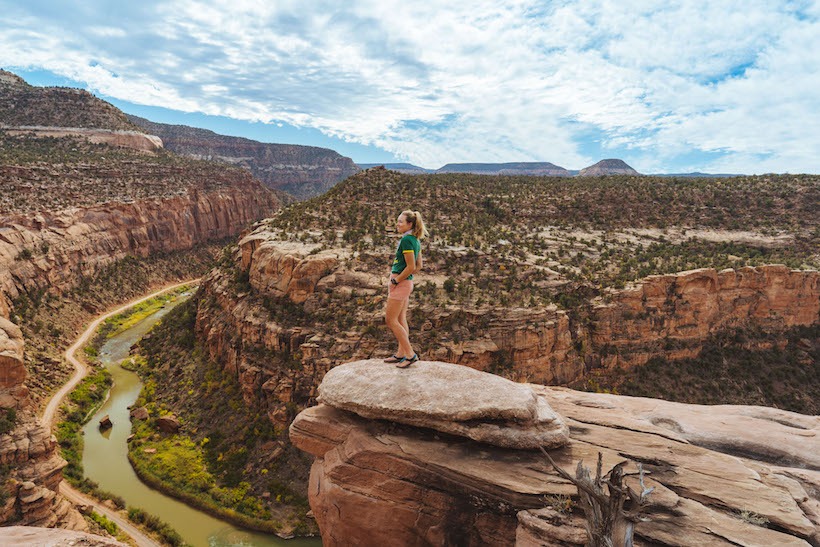
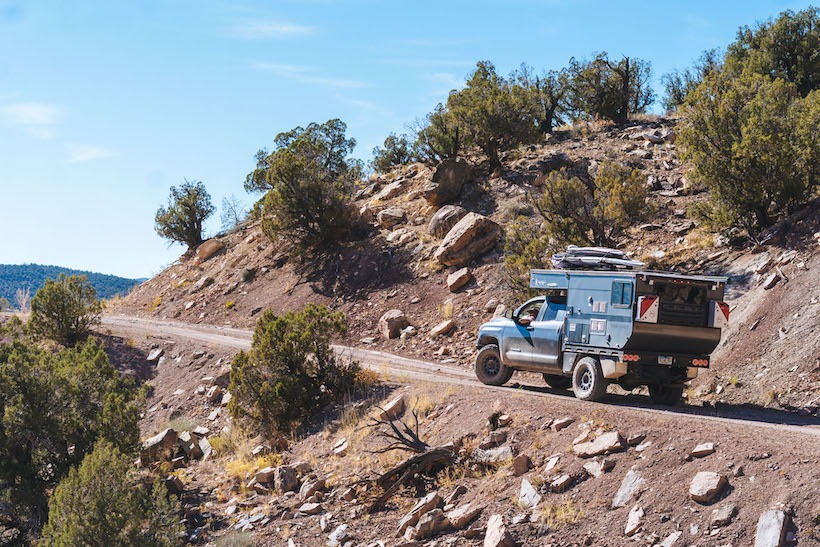
Going just a bit further south on Highway 141, we reached our furthest point of interest, the former town of Uravan. Uravan was a company town established by the Vanadium Corporation in 1936. The entire town of 800 people supported a mill whose sole objective was to process the carnotite ore into uranium oxide, aka yellowcake. The yellowcake was sent elsewhere to be enriched into pure uranium, some of which was used in the atomic bombs that ended World War II. Insane right? The mill remained open until December 1986, but was then closed after the US stopped purchasing uranium, causing the entire uranium industry to go belly up. After the mill was closed for business, a Superfund cleanup began to do its best to remove the radioactive town and mill. Now all that can be seen in the town of Uravan, which is still listed on any map, is fenced off fields warning that the area is radioactive. It’s an incredibly eerie sight to see and left us wondering what became of the miners that worked in a mill that was so radioactive that they’re still cleaning it up today. Nearby there was a sign (provided by the still present Vanadium Corporation down the street) stating their pride in the cleanup efforts to return “the canyon almost as it was before mining operations began”… Minus the many radioactive signs.
Side note: We HIGHLY recommend spending some extra time to explore down HWY 141. It’s an interesting and seldom told part of our history that is worth knowing about, and the San Miguel River Valley is unspeakably beautiful in its own right!
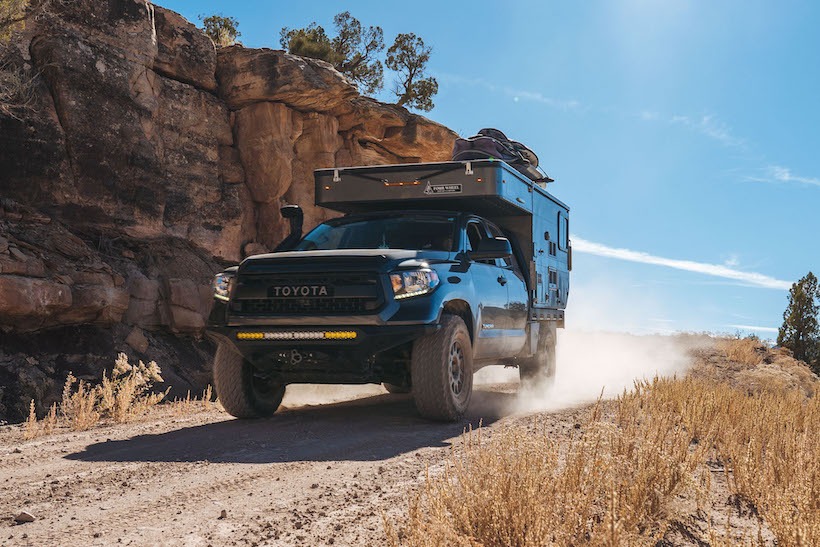
Headed back towards the Rimrocker Trail, we crossed the Dolores River on a bridge and followed Y11 Road alongside the Dolores to get a closer look at the hanging flume. Just a few miles down we came to our destination, a fully reconstructed section of the Hanging Flume. We thought it would be interesting to see the flume in its original state to get a better idea of how it worked. There was a little pull-off at the site where we made and enjoyed our lunch on the banks of the Dolores River.
After spending the vast majority of the day wandering the San Miguel River Valley we surmised that we could spend several days exploring this area and still not see everything we’d like! Despite that, we made our way north and back to the Rimrocker.
HWY 141 – 2 Mile Road
The steep road climbed up the side of the San Miguel River Valley past biscuit rock. We drove past even more mines (which we believe to be radium mines because they were named Radium King and Radium Queen) until we reached Pine Flat. The flat was some of the most forested sections of the trail thus far and is the home to the wood sourced for the Hanging Flume. For a while, the road was made up of deep sand before we turned onto the side of the flat to get sweeping views of the valley below.
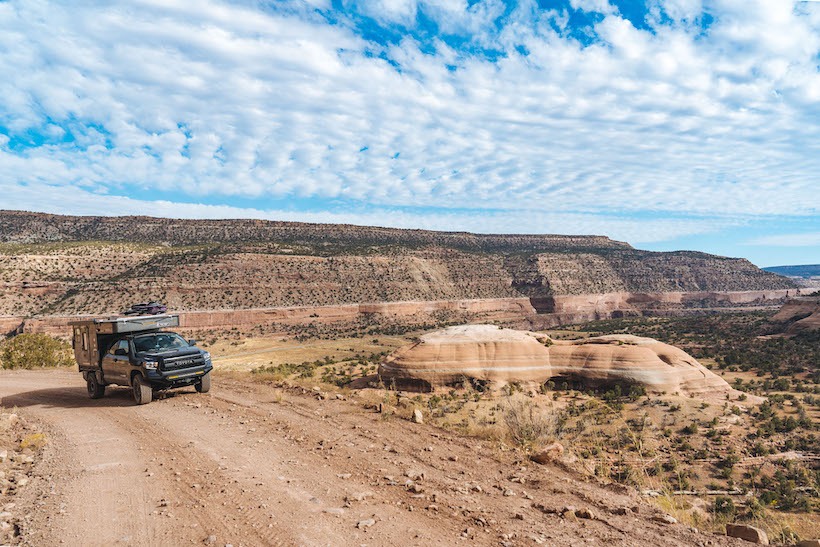
Paradox Valley was strikingly beautiful and got its name from the Dolores River which “paradoxically” runs across the valley instead of with it. Fascinatingly, the valley was created from water flowing beneath an ancient salt dome. The flow of water eventually dissolved a subterranean layer of salt causing the weak sandstone above to collapse forming a valley where there was previously a dome. Nature is impressive, is it not?!
From there we continued towards camp. As we traced the cliff line of the Paradox Valley the road had some technical features and a sharp drop off on the left-hand side. A short while later we came to Buckeye Reservoir and Recreation area where we planned to camp for the night. Since it was late fall, there was only one other family camped in the entire area and made for a nice quiet night. To that point, we’d only seen a single person on the Rimrocker Trail since leaving Nucla!
From our camp spot, we had a vault toilet to ourselves and uninterrupted views of the La Sal Mountains off to the west.
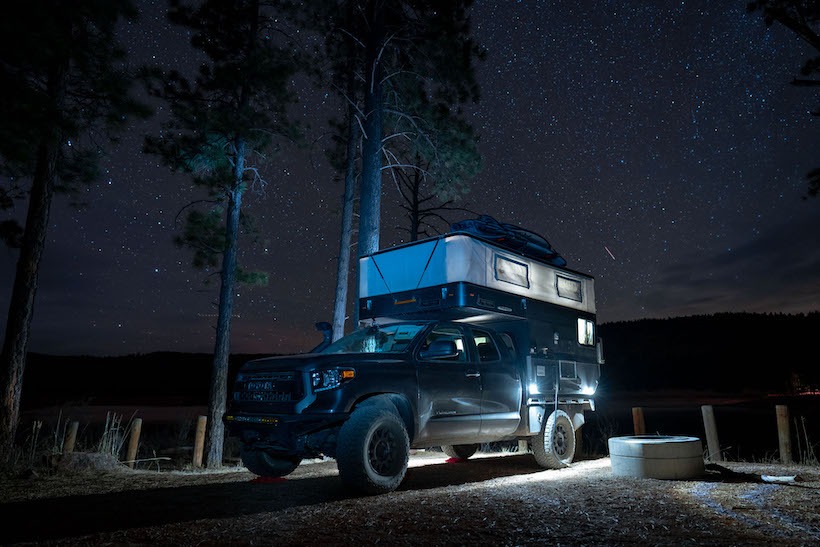
The next morning we woke up for our last day on the Rimrocker. After coming around the far side of the reservoir we came to the Colorado and Utah border, which marked our last stretch of road before we would be exiting the trail at Two Mile Road.
The vast majority of the driving was on easy roads that took us through many different ranch lands. The La Sals got a fresh blanket of snow the night before making for a very picturesque drive through the last of the yellowing aspens. Before we knew it, our exit off of Two Mile road arrived and we hit pavement for our last stretch towards Moab.
The Rimrocker Trail does continue all the way to Moab but we read that the last bit is “an overly rough cobblestone street” and gets really narrow. We read this from people who were traveling in Jeeps, which are much narrower than we are. We opted to exit to save the paint on our Four Wheel Camper and truck.
We really loved the Rimrocker Trail. We felt that it was a great “first time trail” that also features tons of history and interesting waypoints to get you out of the car along the way! I know that after reading this a lot of you will be curious if your vehicle could successfully do the trail. There is one river crossing after Nucla and before HWY 141 that gets deep during the spring run off. At times it can be totally impassible. By going in the fall, the creek was entirely dried up. We could have easily done the entire road in 2WD if we wanted to, but in areas of sand and uneven rocks 4WD is really nice for peace of mind and control. There are just a few spots of technical driving that are easy to navigate. Overall any stock 4WD vehicle should be fine on this trail. Even a capable 2WD would probably do just fine. If you’re concerned about the capability of your vehicle or unsure of your skill level driving, we highly recommend that you do the trail with a partner vehicle. Otherwise, this is a great entry-level trail and we highly recommend it!
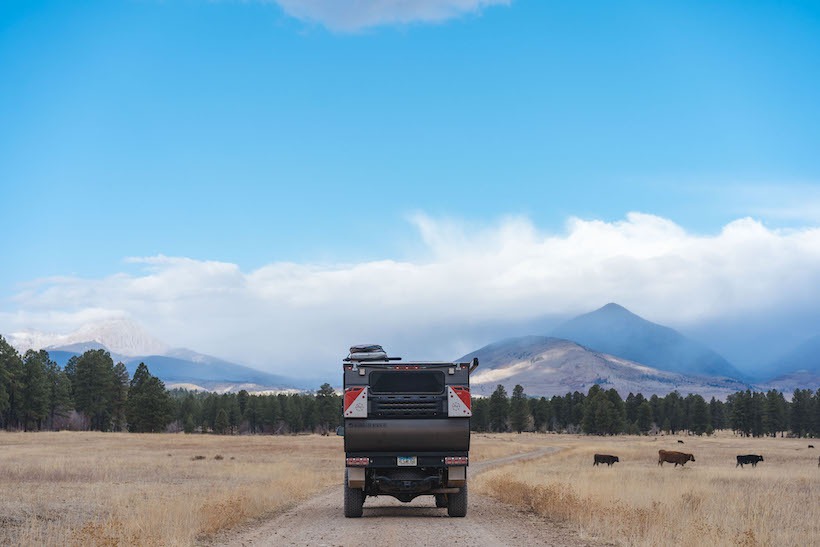
See you guys down the road!
MAK & Owen
Rimrocker Trail Resources:
Map: https://rimrockertrail.org/wp-content/uploads/2018/04/159729-MC-RimRocker-Trail-Map.pdf
https://www.jeeptheusa.com/rimrocker-east-20.html
About Bound For Nowhere:
We’re Owen Chikazawa and Mary Ashley Krogh (MAK), a husband/wife team, that’s been living and working from the road since April 2016 with our cat Luna. We currently live and travel in a 2019 Toyota Tundra with a flatbed Four Wheel Camper. Between the two of us, we’re designers, illustrators, animators, photographers, videographers, and writers. We fill our time seeking new experiences through rock climbing, hiking, backpacking, swimming, surfing, and documenting the journey.
Web: https://www.boundfornowhere.com/
Instagram: https://www.instagram.com/bound.for.nowhere/
YouTube: https://www.youtube.com/channel/UCwecv2Kqfg9bkiG3md4L09Q?view_as=subscriber
